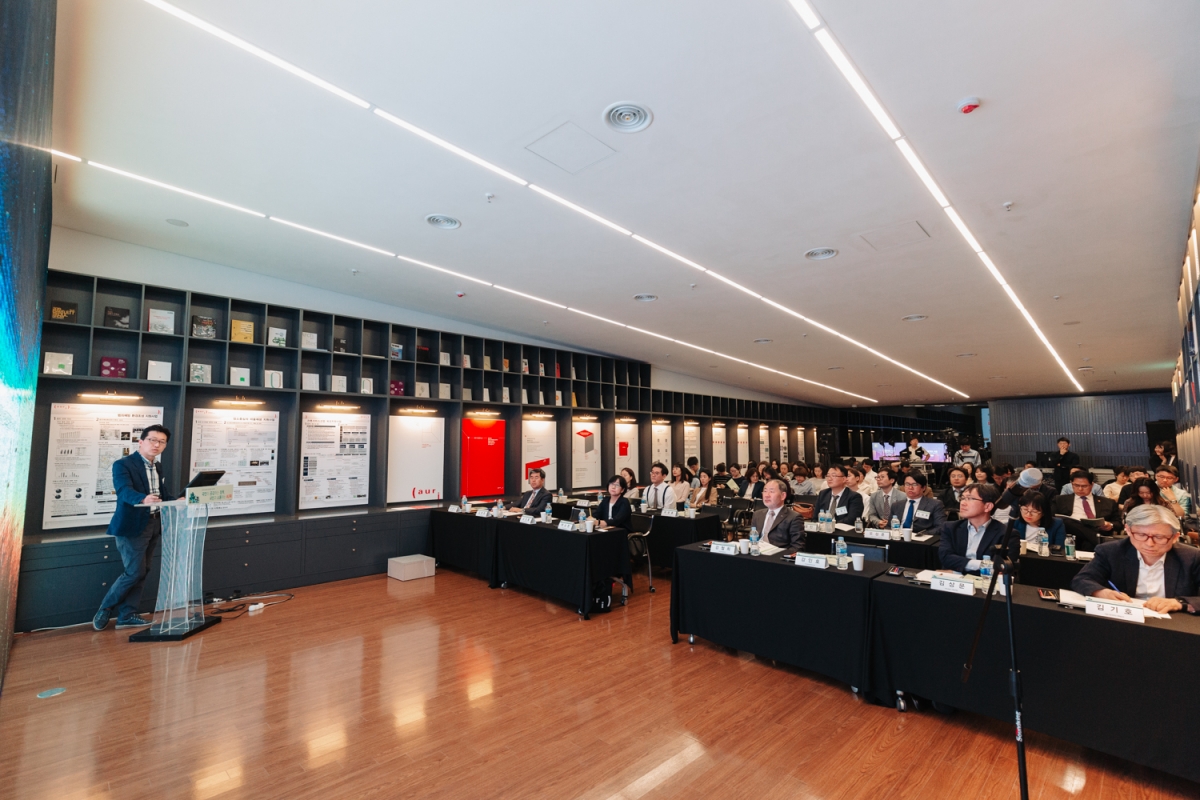The 2019 AURI Research Report Brief was held at the Seoul Hall of Urbanism & Architecture on 23 May. AURI is a government-funded research institute under the Office for Government Policy Coordination that is responsible for research projects devising policies on architecture and urban space. During the Brief session, AURI addressed five key research areas; public architecture, urban regeneration, pedestrian environments, crime prevention, and the hanok. Considered under the theme ‘a policy that the public agrees with, communicating with the public’, the Brief was open to the public and was broadcast live on AURI’s social media channel.
Park Sohyun (President, AURI) noted that the purpose of the Brief was ‘to confirm the product of our efforts to establish and improve national architecture policy’ and ‘to explain policy research in a manner that everybody understands and form common understanding with the public’.
Yeom Cheol-ho (Research Fellow, AURI) first presented a paper on how ‘public architecture is changing community life’. He showed how research had been conducted on ‘improving public architecture procedure, establishing an architecture policy base plan, and developing design competition guidelines through enacting a promotions act on the architecture service industry’, and that efforts continue regarding planning for various projects, research, and institutional improvements to motivate a better future for public architecture.
Seo Su-jeong (Senior Researcher, AURI) followed with her presentation ‘building spaces for village regeneration’, asserting, ‘we plan to conduct research that will inculcate regional regeneration strategies for rural small and medium sized cities facing a post-aged society, and develop tailored residence regeneration policy to include regional autonomous caring residence regeneration.”
Oh Seong-hoon (Senior Researcher, AURI) presented on the ‘efforts and accomplishments in forming a pedestrian-centric city’ and introduced projects such as the ‘first pedestrian road project, the road diet project, the children-friendly city project, and the safe pedestrian environment project’, which were planned as support to establish policies for improving the pedestrian environment by ‘refining regulations, governing methods and guidelines for the pedestrian environment and status survey’.
Cho Young-jin (Associate Researcher, AURI) presented on ‘preventing crime with architecture city design’ and introduced various studies conducted on safer architecture in urban space by ‘developing guidelines for practical crime prevention environmental design by initiating trial projects based on the guidelines’. He also noted that future research would include ‘developing Korea’s crime prevention environmental design considering Korea’s spactial structure’ and ‘establishing a crime safety platform responding to the 4th Industrial Revolution’.
Lastly, Lee Jong-min (Associate Researcher, AURI) presented ‘enjoying the hanok in daily life’. He presented on the ways that ‘policy is being developed and the related laws and institutions are being revised to allow people who want to live or are living in a hanok residence to easily build or renovate through the National Hanok Center’, and that the objective is ‘to expand accessibility to hanok not just in terms of living but also in terms of sharing and enjoying daily life’. <by Choi Eunhwa>





